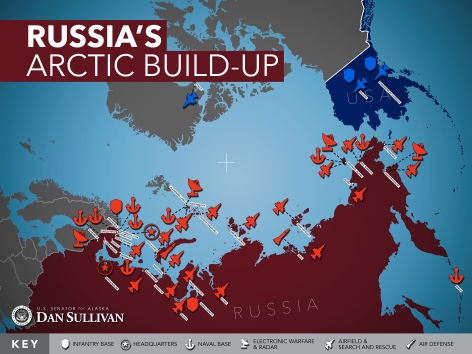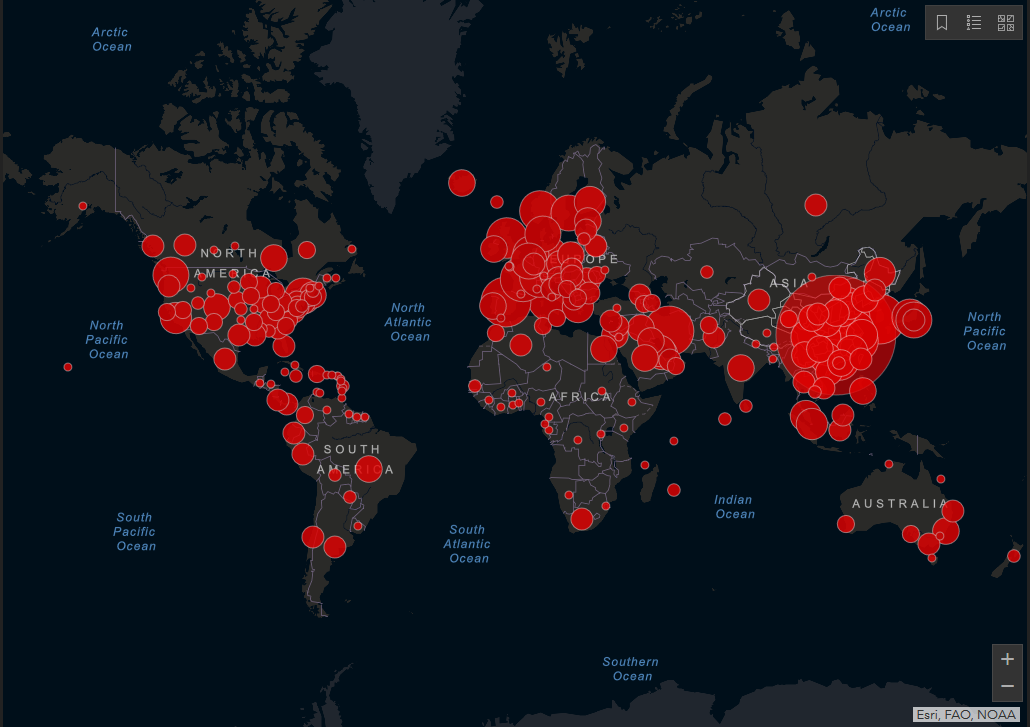
– CIA-Trained Contra Rebels Targeted Sandinista-Held Petroleum Facilities on Nicaragua’s Pacific Coast in 1983 and 1984
Several weeks ago we reported that Tomas Borge Martinez, last living founder of the Sandinista National Liberation Front and Nicaragua’s dreaded interior minister during the 1980s, had been admitted to Managua’s military hospital in poor health. On Monday the 81-year-old Maoist died of complications related to pneumonia, prompting President Daniel Ortega to declare three days of national mourning. Since Borge is no longer around to offer “Comandante” ideological inspiration and financial benefactor Hugo Chavez faces re-election in October, opportunistic Marxist-turned-capitalist Ortega is enlisting the help of his “market socialist” buds in Beijing.
Pictured above: Borge and Ortega in 1994.
On April 27, Reuters reported that China’s CAMC Engineering Co. Ltd. will build a 1.8 million-barrel oil deposit tank and submarine pipelines for a refinery in Miramar, near the Pacific coast city of Puerto Sandino. CAMC’s deal with Albanisa is worth US$233 million. Albanisa is a joint enterprise between Nicaragua and Venezuela and one of several front companies of the Havana/ Caracas-led Bolivarian Alliance for the Peoples of Our America (ALBA).
Francisco Lopez, vice president of Albanisa, was quoted as saying that the refinery will produce 150,000 barrels per day and then send this oil to other ALBA states. The entire refinery will cost around US$6 billion and take about 20 months to complete. Shen Wei, CAMC executive, told Cuba’s Prensa Latina that the hydrocarbon base in Miramar will consist of 15 tanks for fuel oil, diesel, aviation fuel, gasoline, and liquid gas. Venezuelan engineer Deibris Aguilera said that construction of the 104-acre refinery and storage facility could begin as early as May.
The Miramar project was first announced in 2007, when Ortega returned from a 16-year political exile to reclaim the presidency, but has languished since then, lacking capitalization. In the 1980s, Nicaragua’s economy was shattered by a devastating civil war between the first, Soviet/Cuban-backed Sandinista regime and the US-backed Contras or, to use President Ronald Reagan’s terminology, “freedom fighters.”
Although Nicaragua is the poorest country in Central America, over the last several years it has enjoyed the region’s fastest growing economy. Nicaragua also benefits from international investment in projects that will enhance its energy independence. “Despite the anti-imperialist ideological content of the Miramar project,” opines the leftist World War Four blog, “Nicaragua is putting out the welcome mat for Western companies too—especially in the mineral sector.”
During the civil war, CIA-trained Contra rebels staged at least two attacks against oil storage facilities in Corinto, another port city on Nicaragua’s Pacific coast, but further north. On April 18, 1984, The New York Times reported:
Three months before the mining of Nicaragua’s harbors, the Central Intelligence Agency directed a sabotage raid against the Nicaraguan port of Corinto, destroying 3.2 million gallons of fuel and forcing the town’s evacuation, Congressional sources say. The sources said that like the mining, the Oct. 10 [1983] raid on Corinto was carried out by Latin American mercenaries hired by the C.I.A. They reached the port by speedboat from an offshore ship where American C.I.A. agents directed the operation, the sources said in interviews on Monday and today.
The C.I.A. declined to comment today on the report of its role in the operation. ”This was totally a C.I.A. operation,” one Congressional source said, adding that the raid, not the mining, which began in January, was the first time the C.I.A. had directly entered the fighting against the leftist Nicaraguan Government.
The successful October 1983 speedboat raid against the Sandinista-held oil facilities at Corinto appears to have followed by about four weeks an unsuccessful Contra air attack. On September 10 of the same year, the Sarasota Herald-Tribune reported:
Two small planes flown by rebel exiles rocketed oil tanks at Nicaragua’s deep-water Pacific port of Corinto Friday, 24 hours after a bomb raid on Managua airport 50 miles to the east, the Nicaraguan military said.
The [Sandinista Popular] army spokesman, Commander Roberto Sanchez, said there was slight damage to oil storage tanks in Corinto, and that the planes tried to destroy a key bridge but were driven away by anti-aircraft fire. There was no report of casualties.
The London-Based Institute for Strategic Studies says Honduras and Nicaragua [own] four T-28s. The single-engine two-seater training planes were first produced in 1948 by North American Aviation, and can be converted to warplanes. But they are no longer in US Navy or Air Force inventories.
“One of the planes fire several rockets against port installations. Two rockets impacted near the oil storage tanks but did not cause much damage,” Sanchez said. “The places where the attackers launched rockets and bombers are not military objectives. Only civilians work there—night and day.”
The army official said the planes came in from Honduras and fled in that direction, but gave no details. He said Nicaraguan authorities protested to the Honduran government.
The shrapnel-riddled tanks at Corinto, observed the San Francisco Chronicle in 2007, as it covered Iranian President Mahmoud Ahmadinejad’s visit to Nicaragua, “stood until just four months ago, when new Sandinista port directors decided to tear them down.” Contra rebels, according to the March 6, 1985 issue of the Wall Street Journal, also attacked Puerto Sandino over the preceding two years:
Armed speedboats and a helicopter launched from a CIA ‘mother ship’ attacked Nicaragua’s Pacific port, Puerto Sandino, on a moonless New Year’s night in 1984. A week later, the speedboats returned to mine the oil terminal. Over the next three months, they laid more than 30 mines in Puerto Sandino and in the harbors at Corinto and El Bluff.
In air and sea raids on costal positions, Americans flew-and fired from-an armed helicopter that accompanied the U.S. financed Latino force, while a CIA plane provided sophisticated reconnaissance guidance for the nighttime attacks. The operation, outlined in a classified CIA document, marked the peak of U.S. involvement in the four-year guerrilla war in Nicaragua.
The most celebrated attack, by armed speedboats, came Oct. 11, 1983, against oil facilities at Corinto. Three days later, Latino frogmen sabotaged an underwater pipeline at Puerto Sandino. The message wasn’t lost on Exxon, Esso unit, and the international giant informed the Sandinista government that it would no longer provide tankers for transporting oil to Nicaragua.
Nicaragua has no significant port facilities on its Caribbean coast, although five years ago the sympathetic Islamic fundamentalist regime in Tehran promised to finance the construction of a port at Monkey Point. These promises have yet to materialize. However, CAMC’s joint venture with Albanisa is one more example of Communist China’s economic ascendancy in Latin America, while Ortega’s mining concessions prove that the region’s leftist leaders will accept “imperialist” cash if there are no strings attached.
Meanwhile, Roberto Rivas, the head of Nicaragua’s Supreme Electoral Council who is widely perceived to be an Ortegista (Ortega croney), has invited all registered political parties to participate in the November municipal elections. The contested results of the 2008 municipal elections led to the ruling Sandinista National Liberation Front securing a majority of the country’s mayoralties, precipitating months of street fighting between mortar-wielding Sandinista thugs and harried oppositionists, and the termination of financial aid from the USA and European Union.
In order to deflect further international criticism of his dictatorial direction, President Ortega is proposing electoral reform that, significantly, does not include the removal of Sandinista loyalists from the Supreme Electoral Council. “Comandante,” who vows to continue his original Sandinista Revolution, was re-elected last November with a handy but suspect majority.








